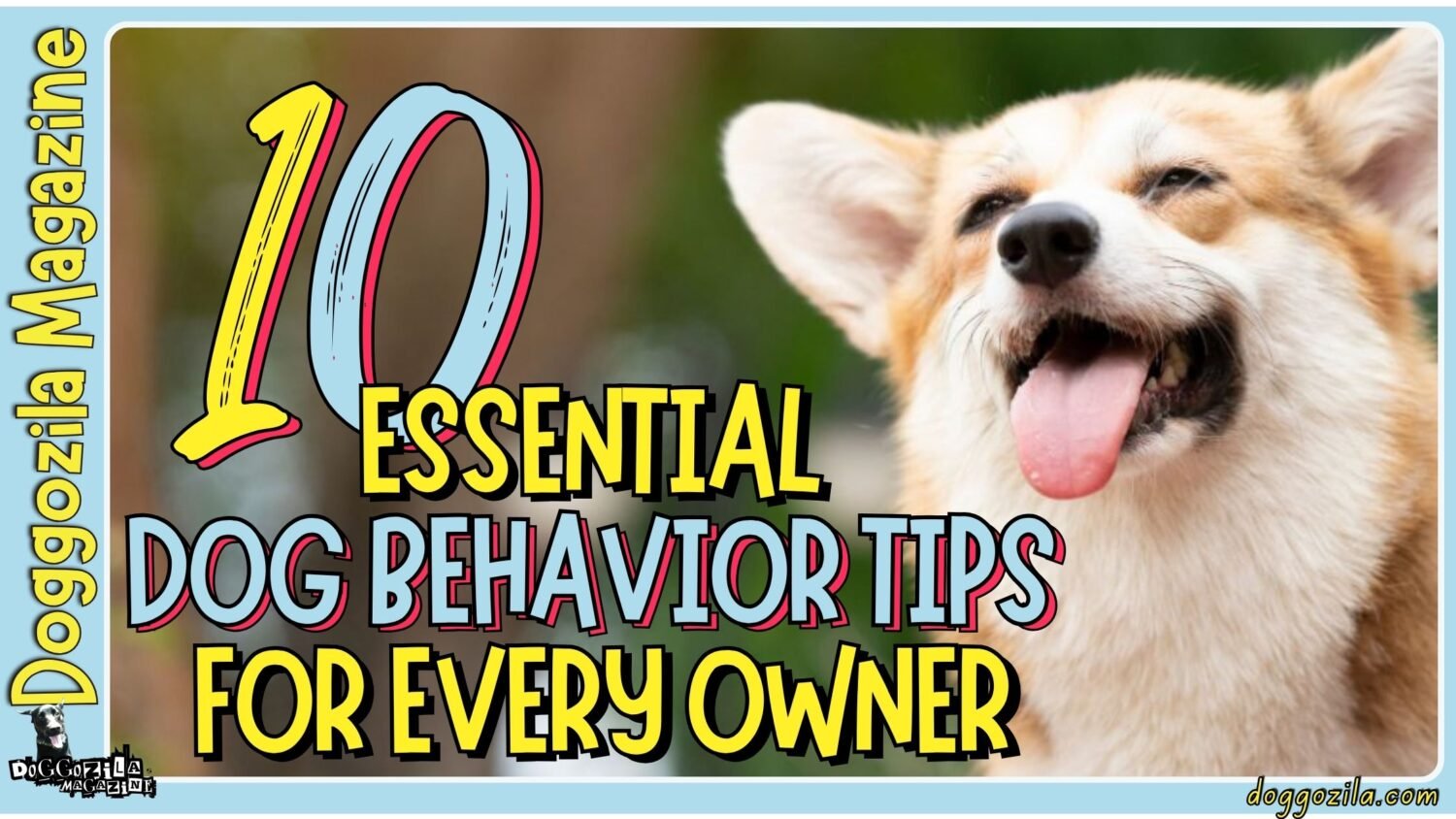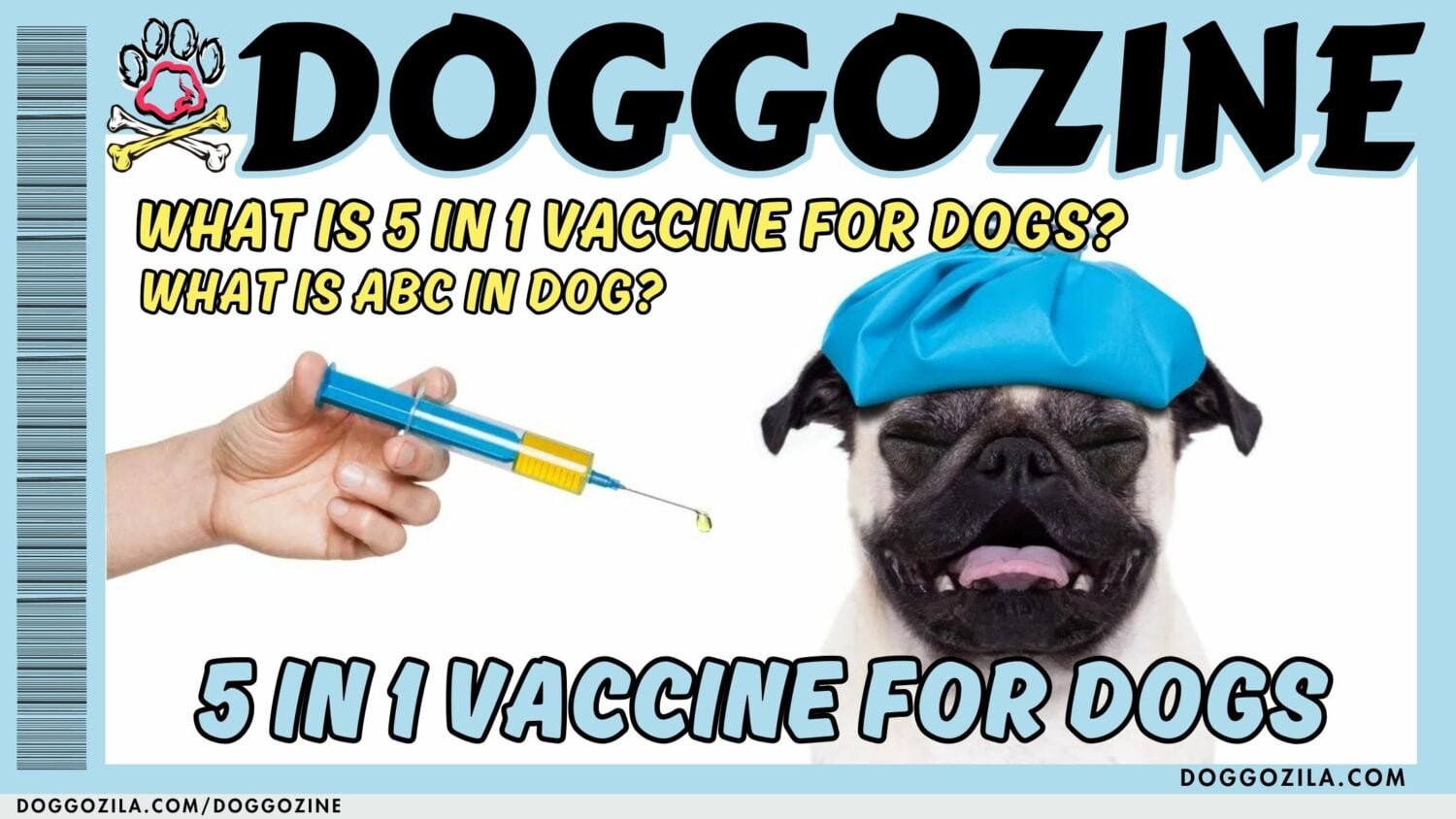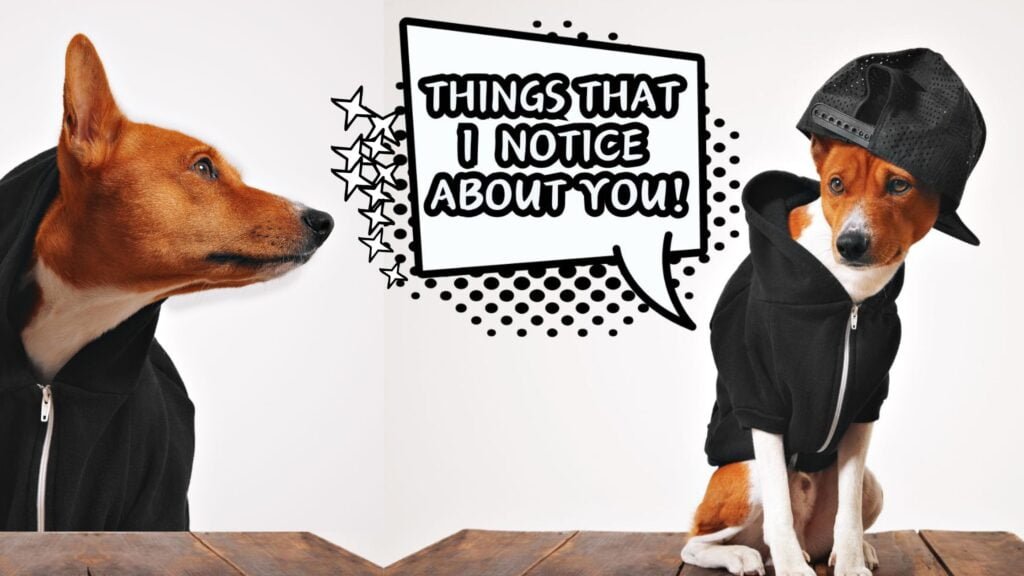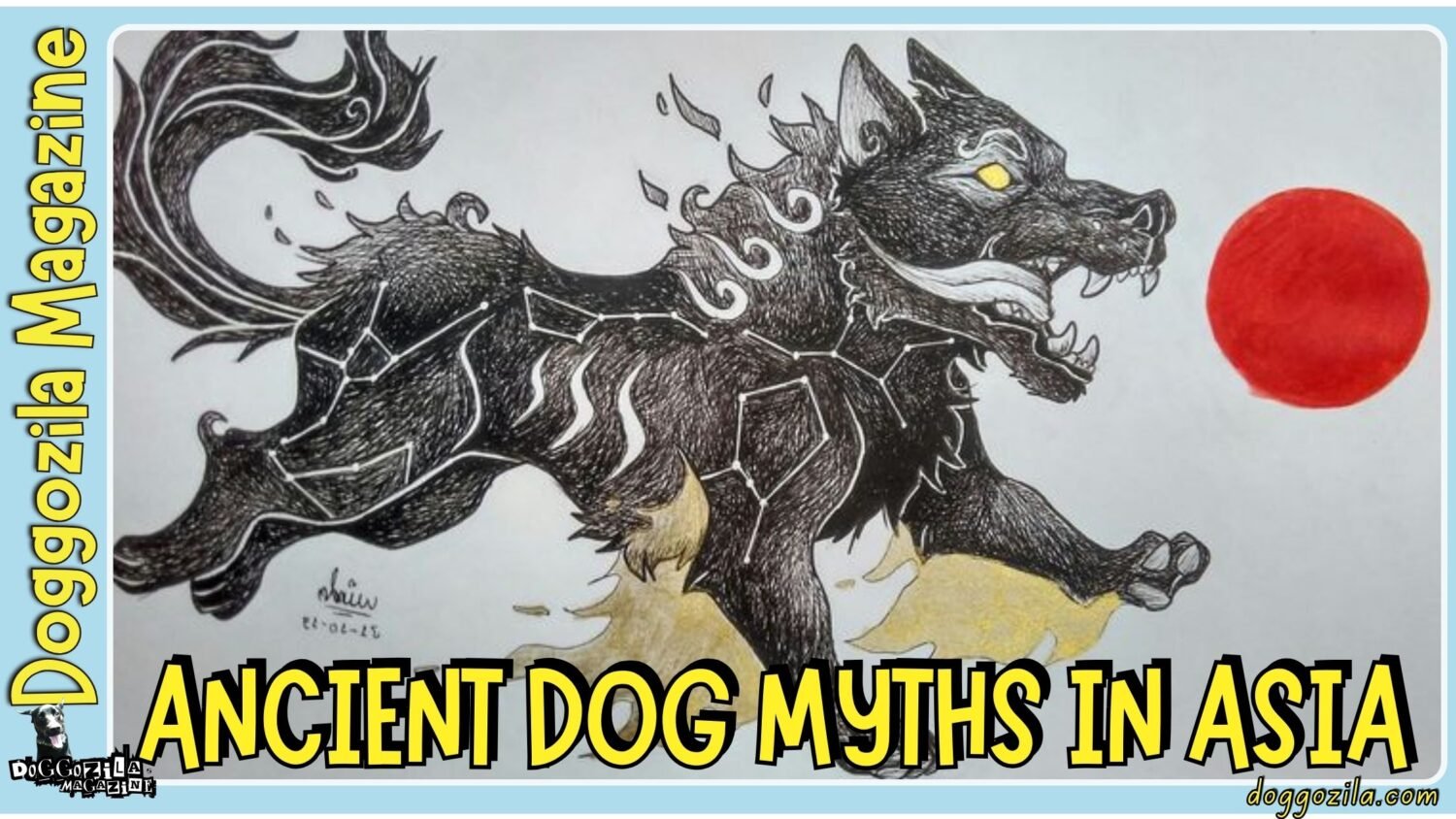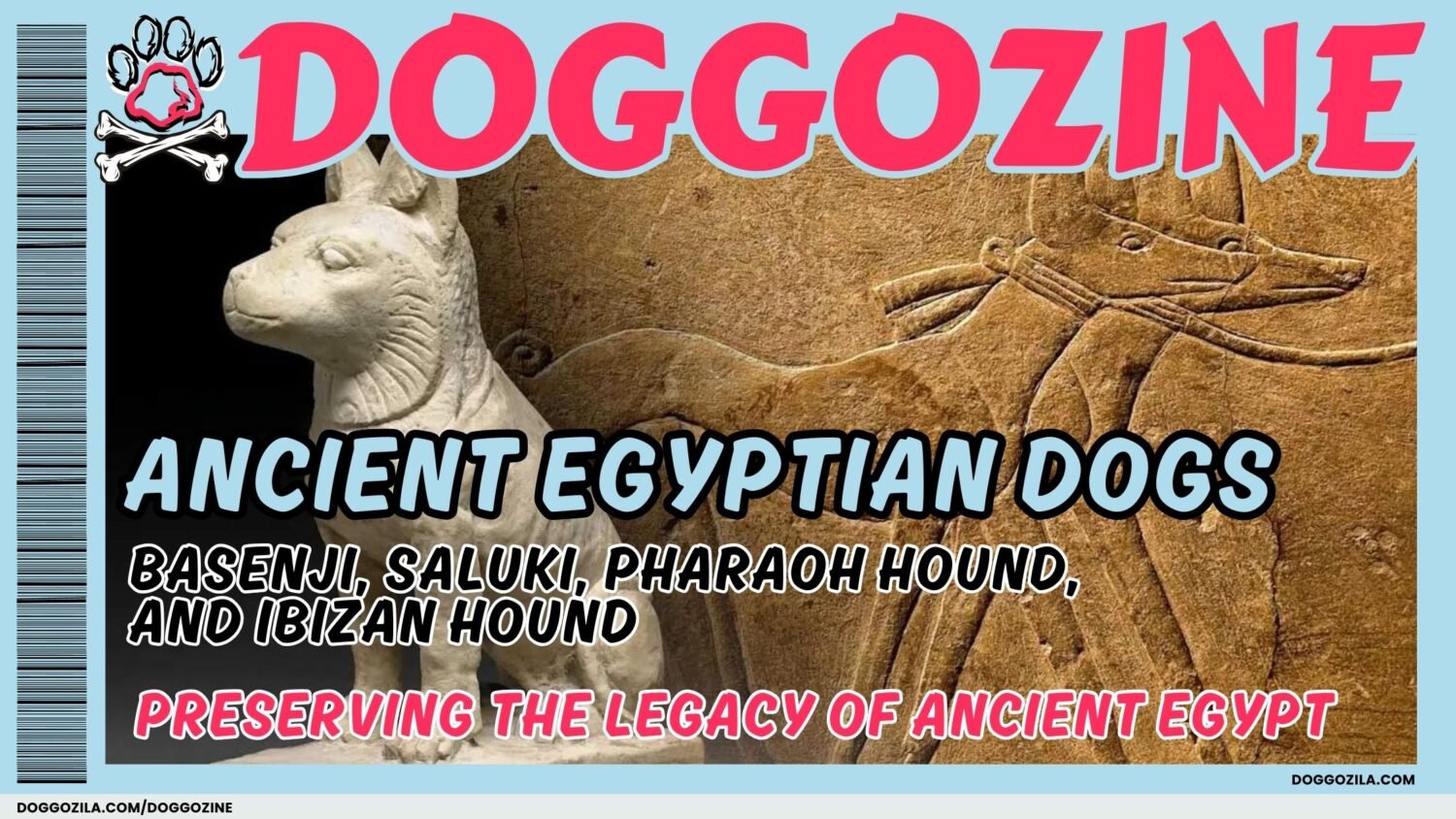While it might seem harmless, understanding why do dogs eat sticks is crucial for their health and safety. From natural instincts to nutritional deficiencies, there are several reasons behind this habit. Let’s dive into the wild, weird, and wonderful world of stick-eating dogs!
It’s one of those classic dog quirks—strolling into the backyard and catching your pup proudly marching around with a stick twice their size. This primal scene might seem innocent, even cute, but behind the scenes, there’s more to it than just playful scavenging.
Dogs are natural foragers and explorers, and sticks offer both tactile intrigue and environmental scent stories. Watching your dog navigate this wooded romance is like witnessing a furry archaeologist on a dig. Let’s decode this behavior without losing the magic of the moment.

WHY DO DOGS EAT STICKS EVEN WHEN TOYS ARE EVERYWHERE?
You might have stocked your home with top-tier chew toys and still catch your dog munching on old twigs like they’re gourmet treats. The key here isn’t scarcity but curiosity—sticks are unpredictable, rough, and drenched in nature’s perfume. Unlike manufactured toys, every stick holds a different scent narrative: traces of insects, mold, old leaves, or even a raccoon who passed by last week.
The question “why do dogs eat sticks” keeps popping up for good reason—it’s a layered question rooted in biology and instinct. Gnawing satisfies oral stimulation needs, engages their brains, and offers that satisfying crunch that toys don’t always deliver. Sticks provide a wild card—something new, something uncurated, something real. Even the texture can be more appealing, especially for dogs with strong jaws. It’s a primal preference playing out in modern backyards.
Sticks Tell Stories, And Dogs Are Trying To Read Them
To a human, a stick is a throwaway object at best—a trip hazard at worst. But to your dog, it’s practically a message board carved in bark. Dogs analyze the scent residues on sticks the way we scroll through social media: every whiff is a post, a comment, a moment in time.
This fascination ties deeply into their evolutionary history, where decoding environmental cues meant survival. So, why do dogs eat sticks? Because some of those “messages” might be important.
Your dog might be discovering if another animal’s passed by or identifying changes in territory. The act of chewing on the stick also helps extract hidden scents nestled in the fibers. Far from being mere play, it’s data mining—dog-style—and they’re the analysts.
Why is my Dog Eating Sticks Despite The Mess And Splinters?
Wood splinters, messes up the carpet, and can come with vet bills, yet dogs return to it like it’s a delicacy. At a sensory level, the chew-resistance of sticks mimics the challenges dogs would face in the wild—pulling apart bones or gnawing on hides. There’s a tactile pleasure involved, something mechanical that releases tension and satisfies an urge. So, do dogs eat sticks when they could choose a clean, safe chew toy instead?
That rough, imperfect texture seems to strike the right nerve—literally. It’s crunchy, gives under pressure, and might even massage their gums. And just like kids who chew pencils in class, dogs find relief through repetitive motion. Even if it comes with the risk of splinters, many dogs are willing to take that gamble for the joy of the chew. It’s nature’s original chew toy, after all.
🔑 Key Points: Dogs Prefer Sticks Over Toys Due to Natural Curiosity – Sticks offer unpredictable textures, scents, and a primal satisfaction that manufactured toys often lack.

A CLOSER LOOK AT NATURAL INSTINCT HELPS EXPLAIN WHY DO DOGS EAT STICKS SO EAGERLY
Long before plush toys and gourmet treats, dogs lived off the land, and sticks were as much part of their world as squirrels and streams. This primal connection still drives many of their behaviors, including gnawing on wood. The sound of a cracking twig might mimic the bones they once chewed to extract marrow. Plus, their inherited scavenging reflex keeps them exploring everything in sight—including that innocent-looking log in your garden. They’re not being weird—they’re just being wolves in a leash-friendly disguise.
Chewing Sticks Mimics Wild Behaviors – The rough texture and resistance of sticks satisfy natural chewing instincts, similar to how wild dogs gnaw on bones or hides.
Do Dogs Eat Sticks As Part Of This Deep-Rooted Ancestry?
Dogs didn’t get their behavioral programming erased when they left the forests and joined our living rooms. Deep within their DNA is a legacy of foraging, chewing, and figuring things out with their mouths. Do dogs eat sticks when they clearly have modern comforts? Because those comforts don’t erase ancient habits.
It’s like how humans still gather around fires—we don’t need to anymore, but we’re drawn to something familiar. In the canine mind, chewing is survival, exploration, and emotional release all at once. That stick in the park isn’t just fun—it’s something ancestral. Something coded in the marrow of their bones. To ignore it would be to ignore who they are.
Observational Studies Showcase Interesting Chewing Patterns
A study from the Journal of Canine Behavior observed over 500 dogs in open parks and natural spaces, and the stick-preference patterns were downright fascinating. Dogs gravitated toward certain types of wood—softer textures, damp sticks, and those slightly decayed, which were easier to break down. But it wasn’t random; dogs consistently chose sticks that had been exposed to scents from other animals or environments.
Why do dogs eat sticks in particular ways? Because there’s a method to the madness—chewing is purposeful, not accidental. One case study followed a Labrador who only chewed driftwood near a lake, avoiding dry twigs altogether. That points to selective preference, not mindless behavior. It’s a reminder that when dogs chew sticks, they’re not just bored—they’re engaged.
Why Do Dogs Eat Sticks Even More After Rainy Days?
Post-rain, your dog’s enthusiasm for stick-collecting goes into high gear. That’s because moisture unlocks a stick’s scent profile and softens the bark—basically amplifying every sensory cue dogs live for. Wet wood also tends to crackle differently under pressure, creating a new experience even if it’s an old stick.
Why do dogs eat sticks when they’re soaked? Because those sticks become flexible, pliable, and way easier to tear apart with a rewarding crunch. The scent of mold, earthworms, and forest chemicals makes the average garden twig feel like a feast. Behaviorists call this “environmental enrichment,” where natural changes create stimulus. Your dog’s backyard just transformed into a forest buffet.
🔑 Key Points: Sticks Act as Dog’s “Social Media” – Dogs analyze scents on sticks like humans scroll through social media, decoding environmental messages left by other animals.
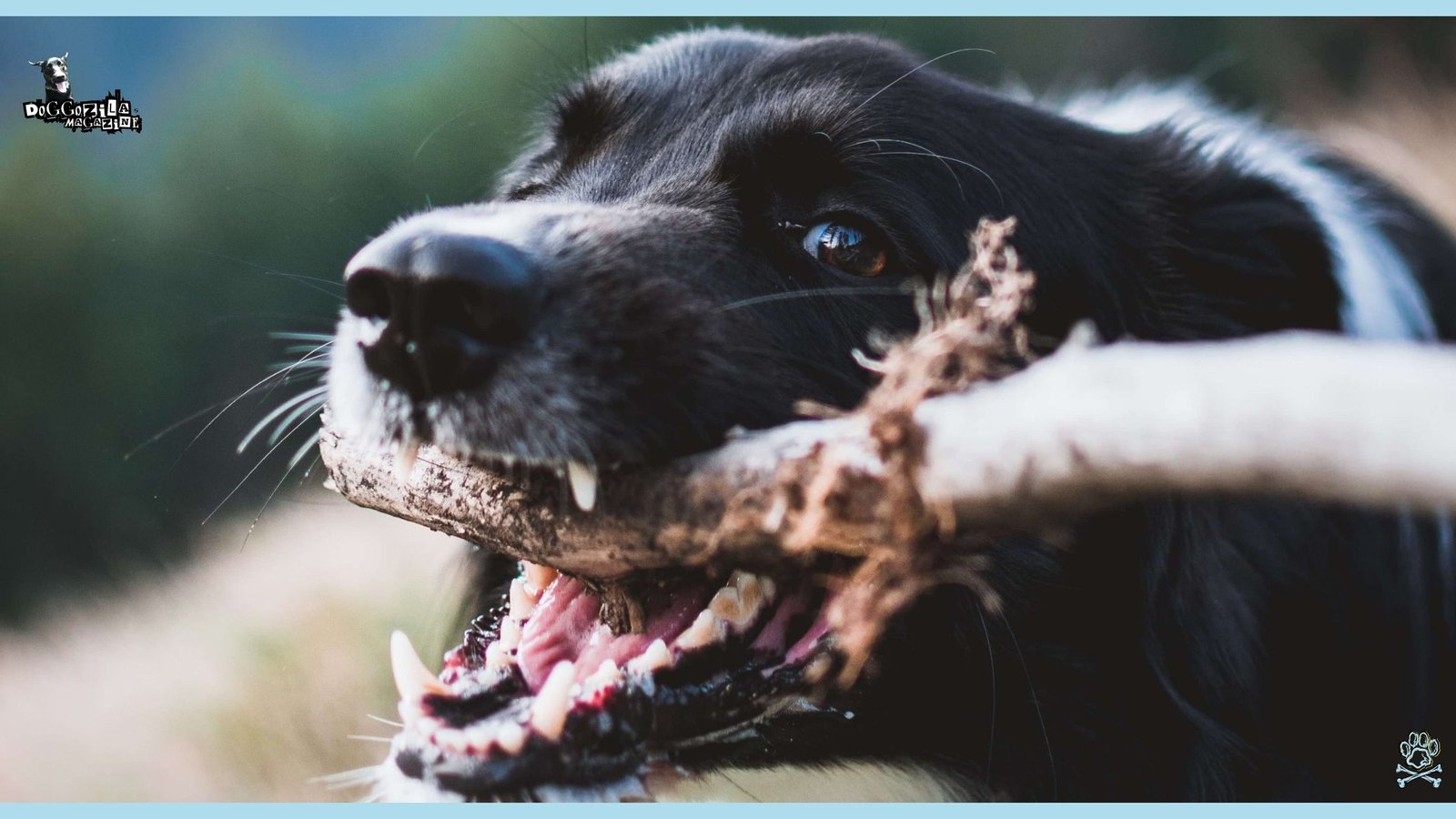
WHY ARE DOGS EATING WOODEN STICKS EVEN WHEN THEY HAVE FOOD?
This might be one of the most baffling parts of the behavior for pet parents. Your dog gets gourmet kibble, supplements, and clean water—so why nosh on bark? It’s not about hunger; it’s about stimulation. Sticks provide a different kind of experience—tactile, mental, and sensory.
Your dog isn’t questioning calories—they’re just doing what feels right. And sometimes, what feels right is chewing bark with zero nutritional value. Much like humans nibble on things when bored or restless, dogs reach for the nearest natural object when their minds crave something different. A full belly doesn’t cancel out curiosity.
Do Dogs Eat Sticks When They’re Bored Or Under-Stimulated?
A bored dog is a creative dog—and not always in ways that delight their human companions. Dogs have an internal drive to solve problems, investigate new textures, and simulate hunting behavior even within the safety of a fenced yard. Our question “why do dogs eat sticks” becomes less about a need and more about an outlet.
Left alone without mental or physical enrichment, chewing gives them something to do, something to figure out. They might toss the stick, watch it roll, trap it again, then gnaw at it like a puzzle. Over time, this becomes ritualistic, providing a predictable comfort and sense of control. While it may seem destructive, it’s actually your dog adapting to its environment. The real problem lies not in the stick, but in the gap that made it necessary.
Addressing Nutritional Curiosity And Mineral Deficiencies
On rare occasions, dogs might chew sticks for more than boredom—it could stem from nutritional imbalances. For instance, if they’re lacking fiber, calcium, or certain trace minerals, they might instinctively turn to natural sources in their environment. So, dogs eating sticks could be their way of trying to self-correct subtle deficiencies.
Decaying wood can carry microorganisms and minerals not present in typical kibble, offering an earthy multivitamin of sorts. Of course, this isn’t the safest source, and relying on bark for nutrition is risky. Still, it’s a behavior seen in wild canines when resources run low. If your dog persistently chews and eats sticks, it’s worth discussing their diet with a veterinarian to rule out underlying needs. Sometimes the body knows what it’s missing—even if it’s asking in bark.
Why Do Dogs Eat Sticks And Then Immediately Vomit?
Unfortunately, dogs’ curiosity doesn’t always cooperate with their digestive systems. Sticks splinter easily and can irritate or even block the gastrointestinal tract, triggering vomiting as the body tries to reject foreign matter. Many dogs experience this cause-and-effect learning quickly, tossing their breakfast after indulging in tree debris.
So when dogs eat many sticks might as well be followed with “and regret it later.” Vomiting can be the body’s emergency reset button, helping remove sharp bits before damage occurs. However, some dogs don’t learn and repeat the behavior, suggesting that the drive to chew overrides the consequence. Chronic cases of vomiting in dogs after chewing sticks should never be ignored. It’s a warning sign wrapped in bark.
🔑 Key Points: Nutritional Deficiencies Can Drive Stick-Chewing – Some dogs may instinctively seek minerals or fiber from decaying wood, though this is risky and should be checked by a vet.

BEHAVIORAL TRIGGERS BEHIND WHY DO DOGS EAT STICKS IN UNFAMILIAR ENVIRONMENTS
Have you noticed your dog becoming a stick connoisseur at the park, but not at home? Dogs are deeply affected by novelty, and a new setting triggers their exploratory instincts. In nature-rich zones, the abundance of stimuli can make every branch seem like a chew-worthy treasure. This behavior spikes with excitement, nervous energy, or stimulation overload.
Essentially, it’s their version of stress-snacking—with bark. This behavior becomes particularly relevant when your pup is overwhelmed or simply euphoric in a new space. It’s a coping mechanism, a sensory anchor in a world full of scents and surprises. Every bite of wood becomes a way to digest the environment.
Do Dogs Eat Sticks More When They Feel Anxious Or Overwhelmed?
Anxiety in dogs often manifests through oral behavior—chewing, mouthing, licking—all of which release calming endorphins. When your dog feels unsure, a stick becomes a grounding tool. The simple, repetitive act of chewing helps regulate emotions, providing both focus and a sense of control.
That’s why in unfamiliar places or after stressful events, dogs might gravitate toward the nearest twig. It’s not defiance—it’s self-regulation. When your dog do eat sticks, we can say that in these moments is the canine equivalent of humans biting their nails or fidgeting. The flavor or texture might not even matter. What matters is that it’s something. Something they can do to push back the noise of the world.
Exploring Scent Overload And Environmental Triggers
The olfactory power of dogs is legendary—they can detect substances at concentrations as low as one part per trillion. This means that a single stick in the woods might carry dozens of scent profiles: mold, sap, insects, other animals, rainwater, or even human touch. When dogs encounter this scent cocktail, it’s like dropping them into a sensory amusement park.
The answer is always going to be different if we ask “why do dogs eat sticks” in these contexts? Because their brains are firing at full speed, processing layers of data through every sniff and nibble. Chewing might help tease apart these aromas and extend the sensory experience. The stick becomes more than a stick—it’s a long-form story they’re actively consuming. One bite, eight scents, infinite excitement.
Why Do Dogs Eat Sticks Near Water Sources Or Trails?
Sticks found by lakes, rivers, or forest trails are practically gourmet. These areas concentrate animal activity, moisture, and decaying organic material—everything dogs find irresistible. The wood here tends to be soaked, broken down slightly by the elements, and packed with scent information. Chewing on one of these sticks is like browsing a buffet of environmental flavors.
When people ask “why do dogs eat sticks” in these settings, the answer lies in the scent ecology. Water amplifies odors, and trails concentrate dog pheromones, wildlife residue, and microbial colonies. To dogs, that combination is irresistible. Every bite is a new clue, a layered discovery, and part of an immersive forest experience.
🔑 Key Points: Dogs May Chew Sticks Due to Boredom or Anxiety – Repetitive chewing provides mental stimulation and stress relief, especially in under-stimulated or nervous dogs.
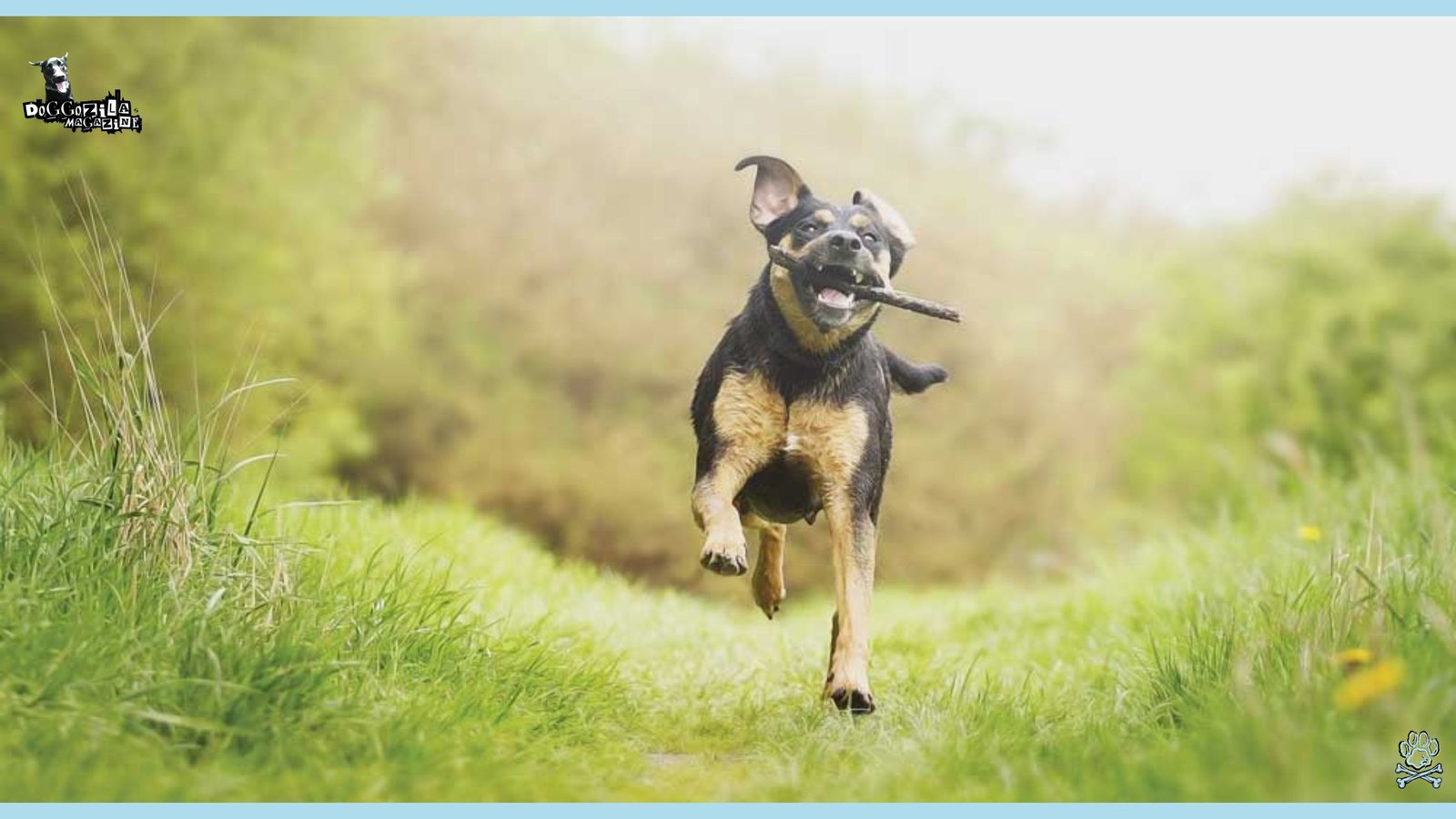
WHY DO DOGS EAT STICKS EVEN WHEN TRAINED NOT TO?
Dog owners often put hours into positive reinforcement training, yet the lure of sticks remains strong. This doesn’t mean training failed—it just highlights how powerful natural drives can be. Dogs experience the world through their mouths, and some instincts run deeper than obedience. Even the best-trained dogs are occasionally overcome by sudden urges triggered by smell, taste, or texture.
In some cases when your dog eat sticks can remain to be relevant because training modifies behavior, but doesn’t erase genetic programming. Sometimes, it’s less about disobedience and more about opportunity. That one irresistible stick can feel like a loophole in an otherwise well-followed rulebook.
Why Do Dogs Eat Sticks Only When You’re Not Watching?
Dogs are clever, observant, and surprisingly skilled at testing boundaries. Many know which behaviors are acceptable—and which earn them “the voice.” So, it’s no surprise that the question “why do dogs eat sticks” often becomes a stealth mission when you’re not looking. When unsupervised, dogs indulge in their favorite forbidden hobbies.
This points to a complex understanding of consequences and timing, similar to how toddlers sneak cookies when your back is turned. It’s not just about sticks; it’s about agency. Even with strict training, dogs have internal motivations they’ll act on when the coast is clear. They’re not misbehaving. They’re just seizing the moment.
Reinforcement Techniques Often Fail When Instincts Dominate
Even the most patient dog owners hit a wall when instinct overrides training. It is true that dogs can eat sticks even after weeks of training the “leave it” commands! It comes down to drive strength—sometimes, the allure of a behavior outweighs the perceived benefit of listening.
Training works best when the reward for obedience is greater than the thrill of the act being discouraged. But for some dogs, the smell, feel, and crunch of a stick is a jackpot in itself. That’s why consistency is key—and also why redirection is often more effective than outright denial. Give them something just as satisfying to chew, and you might stand a fighting chance.
Why Do Dogs Eat Sticks More After Leash Walks Than During Play?
Leash walks control freedom, which heightens desire. Play sessions in enclosed spaces offer more outlets for physical energy, but walks introduce a tension between restraint and temptation. Many dogs hold back on walks, fixated on every scent they pass. Once they’re off-leash or back in a yard, that pent-up curiosity explodes.
So, “why do dogs eat sticks” at this point? Because it’s the reward they’ve been saving up for. It’s delayed gratification in wood form. Dogs that feel restricted or under-stimulated on walks often release that tension in familiar environments. And sticks? They’re the post-walk dessert.
🔑 Key Points: Redirection and Enrichment Are Key Solutions – Providing high-value chew alternatives, mental stimulation, and consistent training can help curb stick-eating behavior safely.

HOW PUPPYHOOD HABITS SHAPE THE ANSWER TO WHY DO DOGS EAT STICKS LATER IN LIFE
Puppies learn about the world the same way human babies do—through mouths. The chewing phase is critical for development, dental health, and sensory exploration. If a puppy bonds with sticks early on, the habit can persist into adulthood. These early preferences often go unnoticed unless they cause problems, but they leave lasting behavioral impressions.
Our question “why do dogs eat sticks” often traces back to formative experiences. If your pup teethed on bark instead of plush, don’t be surprised if they revisit that comfort zone years later. The habits we let slide as adorable can become permanent playbooks.
Why Do Dogs Eat Sticks Instead Of Bones During Teething?
Teething is a painful, itchy experience, and puppies will chew anything to relieve it. Sticks offer unique resistance—softer than bones, but tougher than rubber. They splinter in satisfying ways and help push teeth through the gums. Unlike synthetic toys, natural materials offer unpredictable textures that engage more senses.
Dogs at this age can eat sticks from comfort and problem-solving. A bone is too hard, a toy is too smooth, but a stick is just right. Left uncorrected, that preference becomes conditioned comfort. Dogs build associations early, and breaking them later takes strategy, not just commands.
Repetition During Developmental Stages Builds Strong Habits
The more often a puppy chews sticks during those first months, the deeper the connection becomes. Repetitive behaviors during sensitive windows of growth are essentially programming commands. Dogs learn that sticks are rewarding: they ease discomfort, smell interesting, and entertain.
“Why do dogs eat sticks” later in life? Often because the behavior was locked in early and never fully redirected. It’s not stubbornness—it’s a learned coping mechanism. These habits become hardwired defaults unless they’re gently rewritten with consistent alternatives. Prevention is easier than correction, especially when bark becomes beloved.
Why Do Dogs Eat Sticks Even After Outgrowing Puppy Teething?
Even when the physical need for relief fades, the emotional blueprint can remain. Chewing becomes soothing, familiar—a holdover behavior that feels good even when it’s no longer necessary. This is why so many adult dogs continue chewing.
The behavior in question at this stage is less about teeth and more about memory. Sticks serve as an emotional link to earlier comforts. They may offer nostalgia (in a doggy sense) or simply represent a consistent source of satisfaction. It’s not regression—it’s reliability. Dogs are creatures of habit, and this one just happens to be made of timber.
🔑 Key Points: Puppy Habits Influence Adult Behavior – Early exposure to stick-chewing during teething can solidify the habit into adulthood, making it harder to break later.

HEALTH RISKS AND MEDICAL EXPLANATIONS TIED TO WHY DO DOGS EAT STICKS
Now that we’ve explored the wonderland of canine curiosity, it’s time to bring in the serious side. While stick chewing seems harmless—or even charming—it can hide dangers beneath the bark. Splinters can cause mouth injuries, throat blockages, and intestinal damage. Moldy sticks can introduce toxic compounds, and sharp edges are never digestion-friendly.
Understanding “why do dogs eat sticks” also means addressing the potential fallout. Just because something’s natural doesn’t make it safe. Dogs don’t evaluate risks the way humans do, so it’s up to us to be vigilant.
Why Do Dogs Eat Sticks And Then Show Signs Of Discomfort?
A dog that starts pacing, drooling, hacking, or pawing at its mouth may be reacting to a splinter or obstruction. This happens more than you’d think—especially with hardwood sticks that break unevenly. When asking “why do dogs eat sticks,” it’s crucial to pair that curiosity with caution.
Internal punctures, irritation, and even choking are all possible consequences. Sometimes the damage isn’t immediate but builds over time as wood fragments accumulate or injure tissue. Always monitor post-chew behavior. If anything seems off, a vet check beats waiting it out. Early intervention saves more than vet bills—it can save lives.
Digestive Tract Trauma Can Sneak In Quietly
Unlike more obvious hazards, internal stick damage often manifests subtly. You might notice changes in appetite, constipation, or lethargy days after ingestion. This is why dog eating sticks should be a conversation that includes health education. Wood isn’t designed to be processed by canine digestive systems.
Splinters can cause microtears, infections, or lead to serious impactions. And since dogs are stoic about pain, they might endure internal injury without clear external symptoms. Don’t wait for dramatic signs. If you know they’ve eaten wood, keep a close eye.
Why Do Dogs Eat Sticks Despite Past Negative Experiences?
Surprisingly, even after vomiting or medical treatment, some dogs return to stick chewing with zero hesitation. This shows that the behavior is not just physical—it’s psychological. The drive outweighs the memory of discomfort. “Why do dogs eat sticks” despite consequences?
Well, because much like humans revisit bad habits, dogs fall back on behavior that’s wired deeply. If chewing relieved boredom or stress once, their brain will suggest it again—even if the stomach disagrees. It’s another reminder that behavior correction takes patience and creativity. You’re not just stopping a mouth—you’re rewiring a mind.
🔑 Key Points: Health Risks Outweigh the Instinctual Appeal – Splinters, choking hazards, and digestive blockages make stick-eating dangerous, even if dogs enjoy it.
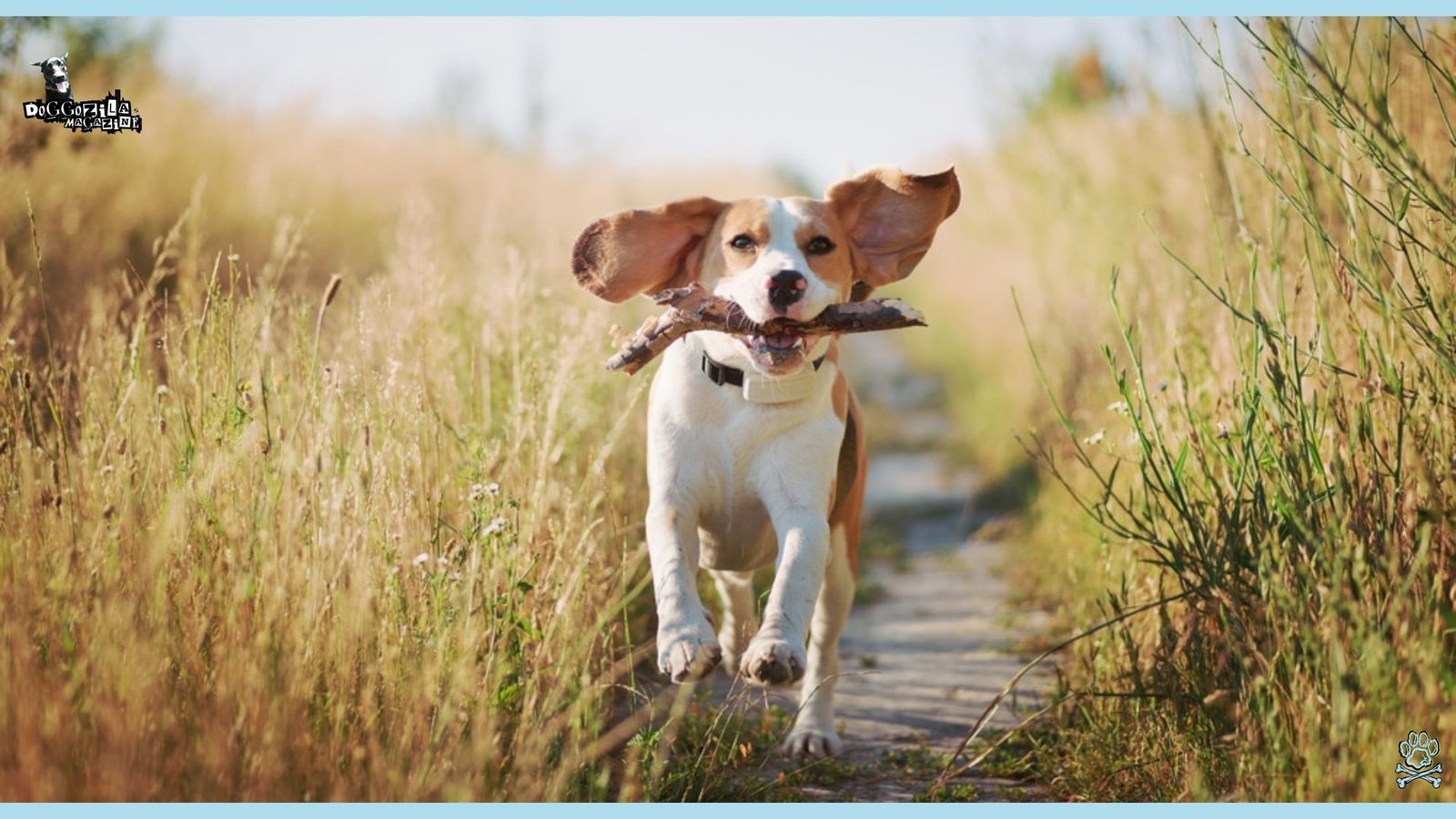
WHAT YOU CAN DO ABOUT IT NOW THAT YOU UNDERSTAND WHY DO DOGS EAT STICKS
At the end of the bark-covered road, understanding the “why” gives us the power to shape the “what next.” Stick eating isn’t evil—it’s instinctual, emotional, sometimes nutritional. But knowing the risks means we can make smart, compassionate decisions. Redirect the behavior with natural chews, puzzle feeders, and engaging activities. Train with patience, not punishment.
Supervise off-leash time more closely. And don’t beat yourself up if your dog sneaks a twig now and then. This is a journey between nature and nurture, and you’re the guide.
Why Do Dogs Eat Sticks When There Are So Many Alternatives?
Because dogs aren’t comparing features on a product shelf—they’re following primal urges in real time. A stick offers scent, texture, crunch, and the thrill of the chase all in one biodegradable package. Even the best chew toy can feel sterile and repetitive compared to the chaos of nature.
“Why do dogs eat sticks” is less a question of availability and more one of fulfillment. To outcompete the stick, you need to offer alternatives that challenge their senses just as much. Think antler chews, root-based toys, or naturally infused bark-like products. Keep rotating items to preserve novelty. It’s not about denying instinct—it’s about upgrading it.
Training And Redirection That Actually Works
Effective redirection focuses on offering desirable alternatives before the stick becomes a fixation. Timing is crucial: praise early, reward fast, and stay consistent. “Leave it” becomes powerful when paired with a high-value treat or toy and used preemptively rather than reactively.
Over time, this builds a new neural path—one where listening pays off more than chewing does. Still, some dogs need extra enrichment to stay mentally satisfied, including sniffing games, agility, or even food puzzles. Ask not just “why do dogs eat sticks,” but “How else can I meet that same need safely?” That’s where progress lives.
Why Do Dogs Eat Sticks Might Still Remain A Mystery Sometimes
Even with all we know—neurological impulses, ancestral behaviors, sensory triggers—dogs still retain an element of unpredictability. They’re part biology, part emotion, part goofy chaos wrapped in fur. Some days, they’ll bypass every toy and treat just to crunch a pine branch like it’s vintage wine.
So while the question “why do dogs eat sticks” often has science-backed answers, it also speaks to that wonderfully wild mystery of doghood. And maybe that’s the beauty of it. We may never fully tame the curiosity in their paws or jaws—but we can walk beside it with understanding, ready with a better chew.
The stick tug war between two dogs can be legendary!
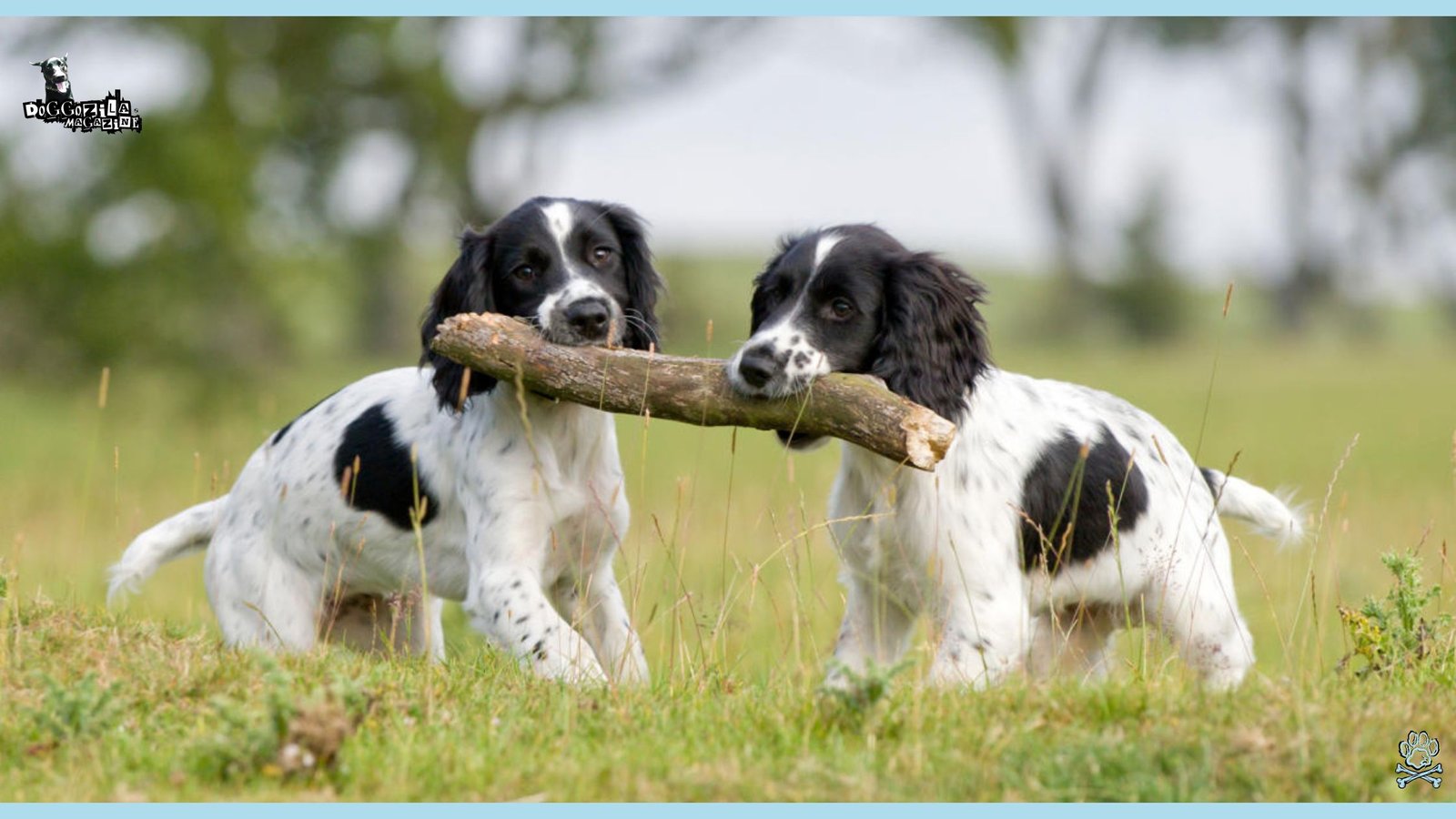
Look our video above and see who is gonna win the tug war between Bilbo and Doggo Tao and who is gonna win the stick!

